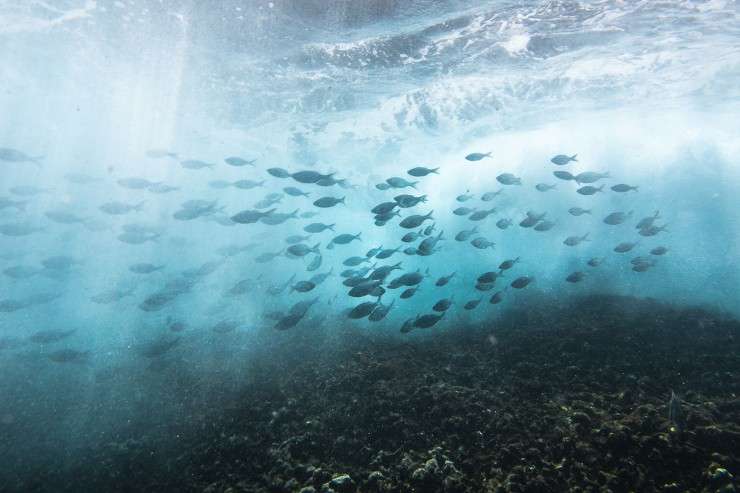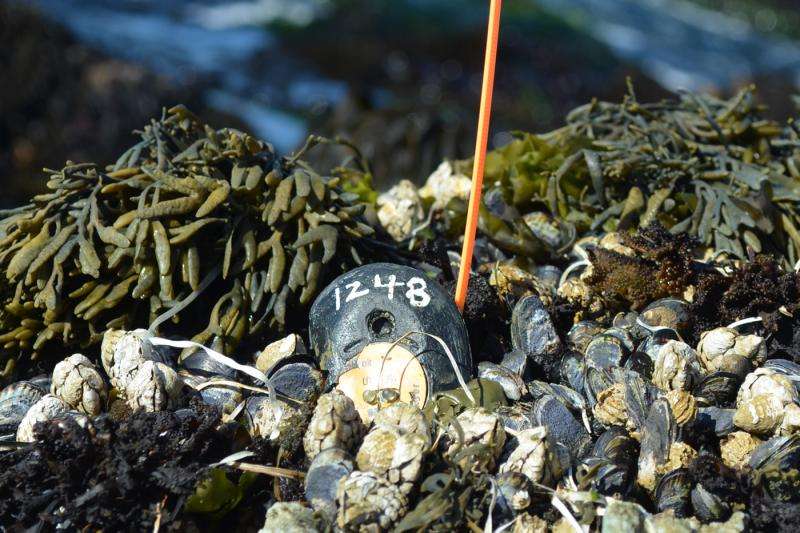Researcher leads worldwide effort to build largest-ever database monitoring temperatures of intertidal systems

In a promising step forward in the study of how climate change affects biodiversity, a group of 48 researchers led by Northeastern's Brian Helmuth, has created the largest-ever database recording temperature conditions from the viewpoint of a nonhuman organism. The database, housed in Northeastern's Marine Science Center, will enable scientists to pinpoint areas of unusual warming, intervene to help curb damage to vital marine ecosystems, and develop strategies that could prevent extinction of certain species.
How do the researchers do it? Using "robomussels." Developed and distributed by Helmuth, robomussels are devices the size, shape, and color of mussels outfitted with sensors that track internal body temperature, which is determined by the temperature of the surrounding air or water, and the amount of solar radiation the devices absorb.
For the past 18 years, every 10 to 15 minutes the researchers have used those robomussels to record temperatures in mussel beds around the globe. The goal is to reveal emerging hotspots so policymakers and scientists can step in and relieve stressors such as erosion and water acidification before it's too late.
"They look exactly like mussels but they have little green blinking lights in them," says Helmuth, professor in Northeastern's College of Science and the School of Public Policy and Urban Affairs. "You basically pluck out a mussel and then glue the device to the rock right inside the mussel bed. They enable us to link our field observations with the physiological impact of global climate change on these ecologically and economically important animals."
The research appeared in a new paper published Tuesday in the journal Scientific Data.
A barometer of climate change

For ecological forecasters such as Helmuth, mussels act as a barometer of climate change. That's because they rely on external sources of heat such as air temperature and sun exposure for their body heat and thrive, or not, depending on those conditions. Using fieldwork along with mathematical and computational models, Helmuth forecasts the patterns of growth, reproduction, and survival of mussels in intertidal zones.
Over the years, he and his colleagues have found surprises: "Our expectations of where to look for the effects of climate change in nature are more complex than anticipated," says Helmuth. For example, in an earlier paper in the journal Science, his team found that hotspots existed not only at the southern end of the species' distribution, in this case, southern California; they also existed at sites up north, in Oregon and Washington state.
"These datasets tell us when and where to look for the effects of climate change," he says. "Without them we could miss early warning signs of trouble."
The robomussels' near-continuous measurements serve as an early warning system. "If we start to see sites where the animals are regularly getting to temperatures that are right below what kills them, we know that any slight increase is likely to send them over the edge, and we can act," says Helmuth.
It's not only the mussels that may be pulled back from the brink. The advance notice could inform everything from maintaining the biodiversity of coastal systems to determining the best—and worst—places to locate mussel farms.
"Losing mussel beds is essentially like clearing a forest," says Helmuth. "If they go, everything that's living in them will go. They are a major food supply for many species, including lobsters and crabs. They also function as filters along near-shore waters, clearing huge amounts of particulates. So losing them can affect everything from the growth of species we care about because we want to eat them to water clarity to biodiversity of all the tiny animals that live on the insides of the beds."
More information: Brian Helmuth et al. Long-term, high frequency in situ measurements of intertidal mussel bed temperatures using biomimetic sensors, Scientific Data (2016). DOI: 10.1038/sdata.2016.87
B. Helmuth et al. Climate Change and Latitudinal Patterns of Intertidal Thermal Stress, Science (2002). DOI: 10.1126/science.1076814
Journal information: Science
Provided by Northeastern University



















